By: Gunilla Ström Hallenberg, SLU Researcher at the Department of Clinical Sciences;
Division of Reproduction
The current outbreak of African swine fever in several Asian countries is causing severe impacts on the pig industry. Since the disease has a very high mortality rate of up to 100%, it is associated with substantial losses for pig farmers and may lead to trade restrictions and ban on exports of pigs and pork from affected countries.
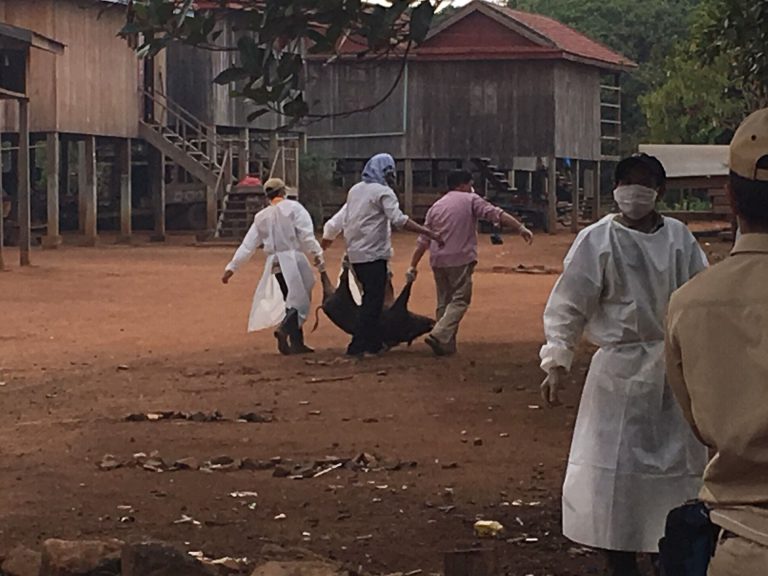
It was in August 2018 that the first outbreak was reported in China. Previously, African swine fever had only occurred in Africa, although with recent spread to Russia and parts of Europe. The emergence of the disease in China is highly worrisome, given that the country harbours around 50% of the world pig population (around 430 million pigs). Since the first reported outbreak, the disease has spread throughout eastern China, with a recent outbreak in the western province of Xinjiang. To date, it has been estimated that around one million pigs have died or been culled as a results of African swine fever in the country.
As a consequence of the ongoing outbreaks in China, neighbouring countries have put in a lot of efforts in order to stop the disease from spreading into their countries. Despite these efforts, African swine fever was reported in Mongolia in January 2019. In Mongolia, the disease has so far led to that more than 10% of the country’s (although quite small) pig population have died or been culled.
On 19 February 2019, the first outbreak was reported in Vietnam, a country with more than 10 million pigs, of which the majority are still raised by smallholders. Initially, outbreaks were concentrated to the northern regions around Hanoi but the disease was recently reported in central Vietnam as well.
The most recent report on African swine fever is from Cambodia, where disease symptoms were first noticed on 22 March 2019 on a small-scale farm in Ratanakiri province, bordering Vietnam. The disease is believed to have been spread through contaminated food products imported from Vietnam. Since then, more outbreaks have been reported in neighbouring districts in Cambodia.
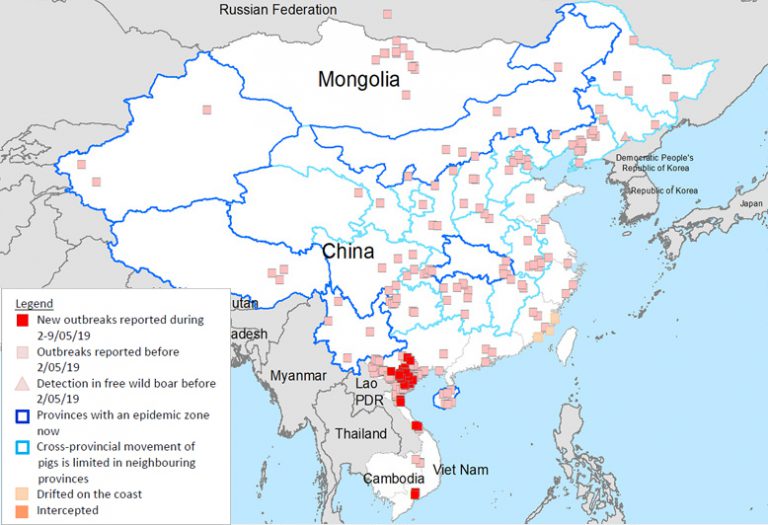
The disease
African swine fever is caused by a virus of the Asfarviridae family. It affects both domestic pigs and the wild boar population. The disease is usually deadly, especially among domestic pigs. Wild boars appear to be less severely affected by the disease but may still carry the virus and infect other pigs. Infected pigs typically show symptoms like fever, loss of appetite, lack of energy and internal bleeding. Reddening of the ears and flanks is also a common symptom. Pigs infected with the virus usually die within ten days, sometimes before even showing any symptoms. The African swine fever virus does not cause disease in humans.
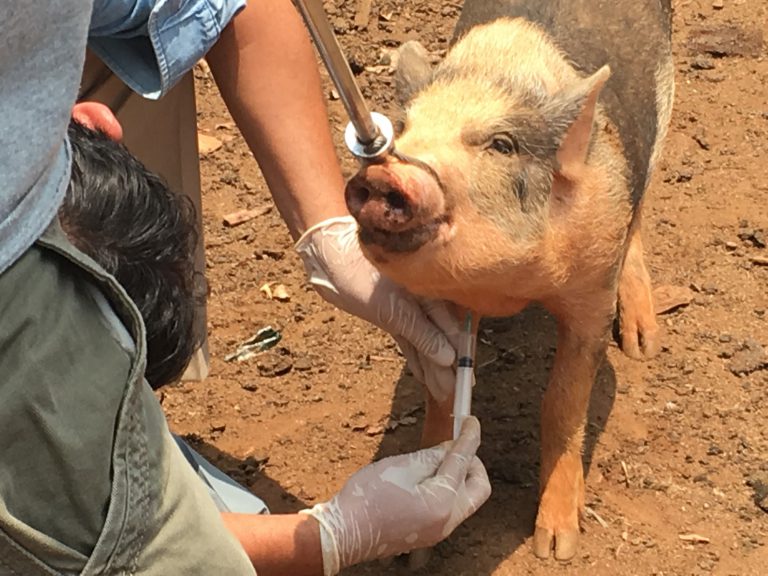
To date there are no vaccine available against African swine fever, which makes controlling the disease challenging. Early detection and good biosecurity are the main tools used to control the spread of the virus. As biosecurity measures are often poorer in backyard or non-commercial farms, those farms are often the ones first affected by the disease. With the exception of China, all outbreaks in Asia have so far occurred in backyard pig farms.
Transmission and spread
The African swine fever virus affects both domestic pigs and wild boars. Healthy pigs usually become infected through direct contact with infected animals, both domestic and wild boar, or if they are fed meat products from infected animals, for example from kitchen waste or through swill feeding. The virus is very heat resistant which means that infected products must be properly heated to eliminate the virus. According to FAO, the majority of the first 21 outbreaks of the disease in China were related to swill feeding, leading to updated feed restrictions and the banning of swill feeding to pigs.
Besides being heat resistant, the virus may also survive in cold or frozen meat products for several months. Importing meat products from affected countries may therefore involve a risk of introducing the virus to other countries. The virus may also be spread between farms and animals through contaminated material, such as clothing, vehicles and other equipment. This appears to be an important route in the transmission and spread of the virus in China. Thorough cleaning of any material or clothing in contact with infected animals or meat products is therefore of great importance. However, such practices might not be properly implemented in lower-income countries and on backyard farms, which facilitates the spread of the disease.
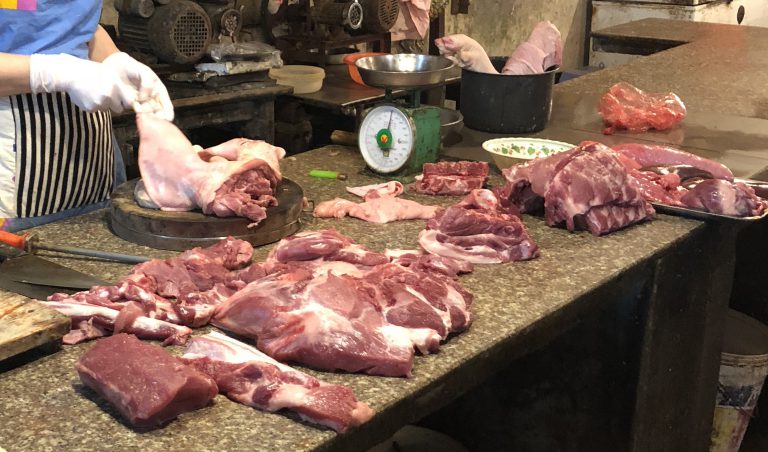
Impacts on the Asian pig production
The spread of African swine fever in Asia will seriously affect the pig production in the region. Besides the obvious effects the disease will have on animal health and welfare, the high mortality and the culling of pigs on positive farms will lead to substantial economic losses for the farmers. Since it is to a large extent small-scale backyard farms that have been affected, this will likely have extensive impact on the income and livelihoods of the farmers and their families. Consequently, these farmers will likely run out of business and there are projections that there will be a shift towards more large-scale pig farms that can afford better biosecurity measures.
The pig industry in affected countries will also suffer the consequences, not only through direct economic losses from deceased pigs, but also through stricter legislation on trade and export of pigs and pork. For example, the pig industry in Vietnam is of great economic importance for the country’s economy and depends to a large extent on the export of products to China and other countries in the region. However, not all changes will be bad. For example, the prospective ban on long-distance transport of live pigs, replaced by refrigerated transportation of pork, will be a step towards better animal welfare. Also, the necessary improvements in biosecurity will likely lead to reduced incidence of diseases and better animal health and productivity.
It is not only the pig industry that is affected by the spread of African swine fever. The decreased supply and availability of pork may lead to increased prices on those products, thereby affecting consumers and retailers. There have been some reports on increased prices on both the European and U.S. markets as well, resulting from the increased demand for pork in China.
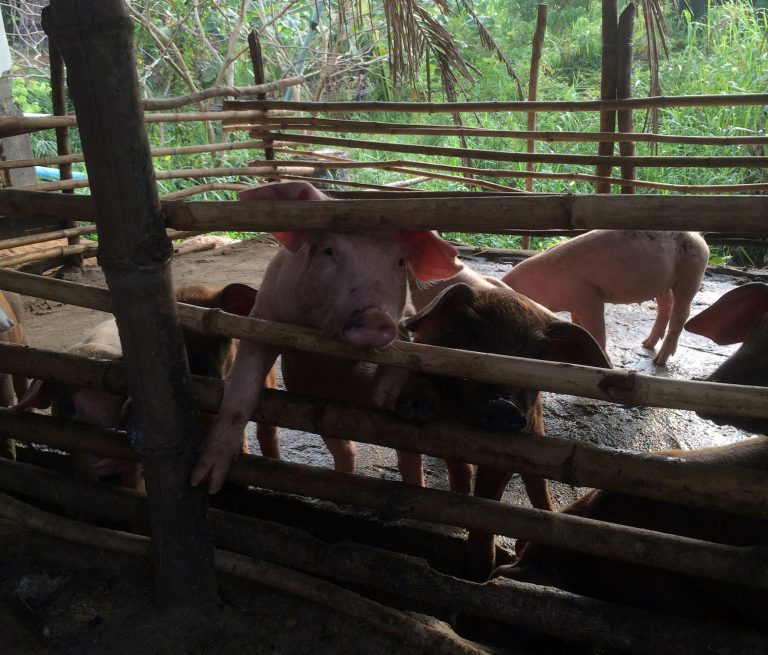
Containing African swine fever in Asia might be an impossible task, given the high density of pig farms in many parts of the region and the high proportion of small-scale backyard farms with low biosecurity. Despite this, governmental authorities and different organisations are working hard to control and prevent the disease from spreading further. If they will be successful remains to be seen. However, one can definitely state that it has been a tough start for the Year of the Pig in Asia.
Read more about African swine fever and a SLU research project in Uganda
